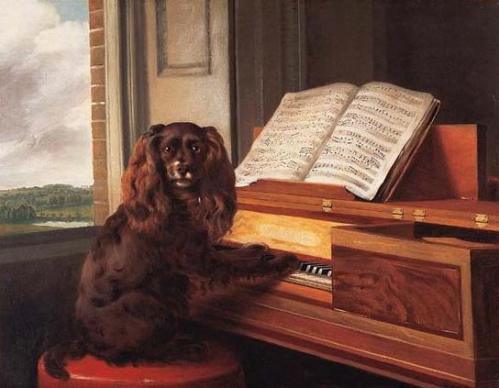
By Bob Hicks
You out there, you poor wayfaring strangers stranded at the offramp of the Information Superhighway with a flat tire or a blown gasket or a speeding ticket from a Washington State Trooper who had his radar gun pointed the wrong way but also had a quota to fill and liked the looks of your out-of-state license plates …
Oh, wait. That’s us.
Months ago, in another cyber age, it seemed as if we were punching pithy posts onto this site with precipitous regularity, exploring the inner recesses of our odd obsessions and the outer recesses of the culture at large. And people visited. Like Elvis of Nashville and Jesus of Nazareth we even had “followers,” although we preferred to think of them as congenial partners in crime. Are any of you still here? Have you remained faithful, or at least hopeful? Or have we twittered your allegiance away?
Where has the summer gone, and why have we so adamantly exercised our right to remain silent?
Truth is, there’s been nothing adamant about it: It just sort of turned out that way. Life got hectic, kids were released from their school jail cells, travels beckoned, and our habit of recording our contemplations in this semi-public forum took it in the shorts. Don’t go away: We’ll try to do better from here on in.
To catch you up a bit, here are a few highlights of things we did and mostly didn’t write about.
The list is decidedly partial, but then, if we told you everything these wouldn’t be highlights, would they?
Tents times in Ashland. When last we cyberchatted, we were discussing the current season at the Oregon Shakespeare Festival, a season disrupted earlier in the summer by a giant crack in a supporting beam of the venerable Angus Bowmer Theatre that prompted a temporary retreat for several shows to a make-do tent in Ashland’s Lithia Park, below the festival grounds. (The Bowmer is patched up and things are back to normal now.) We published several pieces about the Ashland season on this blog, and then wrote this wrapup piece published on Oregon Arts Watch, the fledgling and very promising arts-journalism online magazine edited and published by Barry Johnson. If you aren’t already, you should be checking it regularly.
The Great Southwest. Mr. Scatter and the Small Large Smelly Boy trekked to Albuquerque, Santa Fe and Gallup in New Mexico on their way into the Navajo and Hopi reservations in northern Arizona, where they met many lovely people and saw some fascinating things, including a hidden cliff on Hopi land covered with petroglyphs and pictograms that trace from thousands of years ago to pretty much yesterday. Shamefully, Mr. Scatter wrote nothing about their adventures. Fortunately their friend, co-host and fellow traveler Gerald Stiebel did, twice — here and here — on his excellent blog Missives from the Art World.
We spent a night in Gallup, a dusty and sometimes brawling town in which, as Ian Frazier comments in his excellent 2000 book On the Rez, “(t)he big tank, the cell in the Gallup jail where drunks are thrown, holds five hundred.” It’s also a town where you drive past rambling wood-front buildings with big painted signs that say “FETISH CARVER,” and you know that, unlike Portland, that doesn’t mean there’s a tattoo parlor inside. Gallup was a sort of Hollywood East in the heyday of movie Westerns, many of which were shot nearby, and our traveling party stayed at the rustic El Rancho Hotel, whose walls are lined with photos of famous bygone guests. (The Scatter half of the party stayed in the Burt Lancaster room.)
And we visited the sprawling Gallup art and artifact den of Joe Tanner, a genial bear of a man whose family have been prominent traders with the Navajo since the 1870s. Tanner has his fingers in a lot of enterprises, from silver and turquoise to pinon nuts (New York City is one of his big markets for those vital pesto ingredients), and when you walk into his place you realize immediately you’ve transcended the ticky-tack of the tourist trade: Even knowing next to nothing about the articles he trades, and even with an utter absence of showroom sparkle, you know you’ve entered a place of high quality. There are bracelets and necklaces and bolos and baskets and fetishes and woven clothing and lots and lots of rugs, which are the things that really catch my eye. I know nothing about them, I apologize to Joe, who replies, “That’s all right. You just start with something you like, and then you learn.” He takes me to a huge back room which is filled floor to rafters with Navajo rugs. I point out one that particularly catches my fancy. Joe grins. “Yeah, that’s a really nice Germantown, isn’t it?” he says. I have no idea what a Germantown is. Later I look it up. It refers to rugs made from roughly 1870 to 1910 when a lot of Navajo weavers were using three- and four-ply yarns spun in mills around Germantown, Pennsylvania. (The flourishing of Navajo rugs as an art form, by the way, has an Oregon twist. Until Pendleton Woolen Mills came along and established its intimate relationship with the Indian nations, Navajo weavers had concentrated on blankets. The arrival of Pendletons freed them to move on to the rug trade.)
Brine bonanza. Of late, Mr. and Mrs. Scatter have canned four dozen quarts of dill pickles and 30 pints of sweets. Mrs. Scatter is the mastermind of this annual activity. Mr. Scatter slices the cukes and stuffs the jars. Still to come, if all goes well: a good big batch of apple chutney, and, if we can round up a good supply of green tomatoes, a mess of piccalilli. Already we’ve traded some dills for a couple of quarts of homemade sauerkraut.
The art of the paying gig. Mr. Scatter has been writing a lot about the visual arts for The Oregonian in the past few months, and the gig has got him out to some pretty interesting stuff. A sampling of the things he’s seen:
- Equine at Froelick Gallery, a group show on a horse theme that outfoxes the neighsayers.
- Ming Fay and Rick Bartow: the rewards of longevity.
- Beside the Big River at Maryhill Museum of Art.
- 75 Gifts for 75 Years at the Museum of Contemporary Craft.
- Elizabeth Leach’s 30 years of commerce and art.
Groundbreaking on the Art Scatter World Headquarters Sculpture Garden. Around ASWH we’ve been referring to this as The Year of Spending Dangerously. Foremost in this profligacy has been a rethinking of the grounds around the headquarters building. Pictured below is the first piece installed, a large-scale work that was on temporary loan:

So that’s about that. Reader, are you still here? Thanks for visiting, and please come back soon. We’ll try to put in an appearance ourselves.
*
TOP: “Portrait of an Extraordinary Musical Dog,” oil on canvas (presumed), by the British artist Philip Reinagle, R.A. Dated 1805. From the collection of the Virginia Museum of Fine Arts. Wikimedia Commons/Image courtesy of janeaustensworld blog.